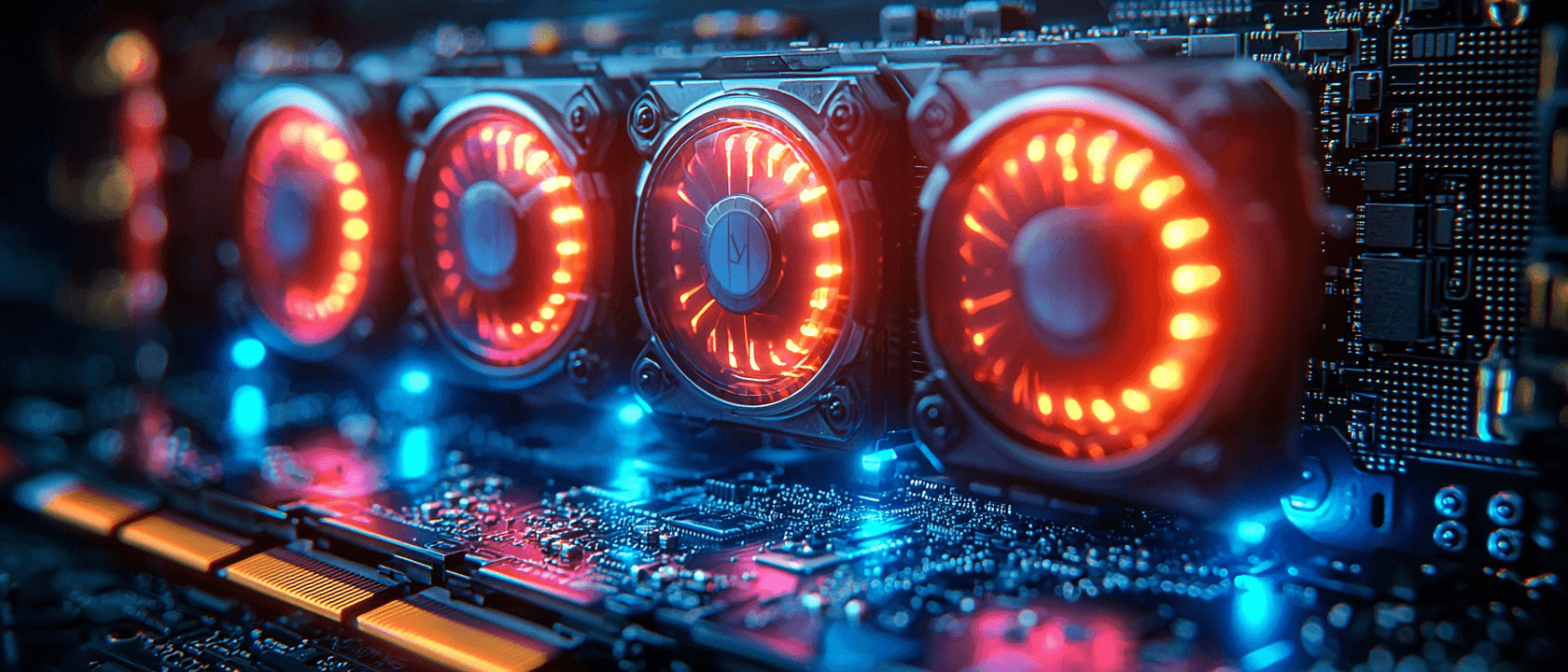
A GPU (Graphics Processing Unit) is a specialized processor originally created to handle graphics in games. But it turned out that its architecture is ideal for parallel computing. If a CPU is a brilliant mathematician solving complex problems sequentially, then a GPU is an army of thousands of calculators working simultaneously.
Machine learning requires processing huge amounts of data and performing millions of similar operations. A GPU can do this 50-100 times faster than a CPU thanks to 2,000-10,000 computing cores versus 8-32 for a processor.
The best NVIDIA H100 graphics card costs $25,000 - $30,000. For a serious AI project, you need at least 8 of these cards - that's $200,000 - $240,000, not counting servers ($15,000 - $25,000), cooling systems ($10,000 - $20,000) and a special room. Plus, in 2-3 years, the hardware will become obsolete.
Renting a GPU solves these problems completely. You pay only for the time of use - from $0.50 - $1.50 per hour for an RTX4060 and up to $25 - $35 for an H100. Need to train a model in a week? Rent the power for a week. Is the project complete? Disable and don't pay a penny.
The GPU rental market is growing by 35-40% annually and will reach $8-10 billion by the end of 2025. Companies from startups to corporations have realized that flexibility is more important than ownership. Netflix does not buy all the films, but licenses the content. Uber does not own all the cars. The same is with computing power.
Interesting fact: one hour of GPU cluster operation for training a large language model can cost $500-1000, but save 2-3 months of development. This is the new economy - time is more expensive than hardware.
Experts predict an acute shortage of GPUs until mid-2026 due to the boom in generative AI and the growing demand for training multimodal models. Rental companies are becoming critical infrastructure. There are even "GPU exchanges" where prices change every 15 minutes depending on demand.
A new trend is "serverless GPU", where you pay only for the time the code is executed, without downtime. This makes machine learning accessible even to students and small startups.